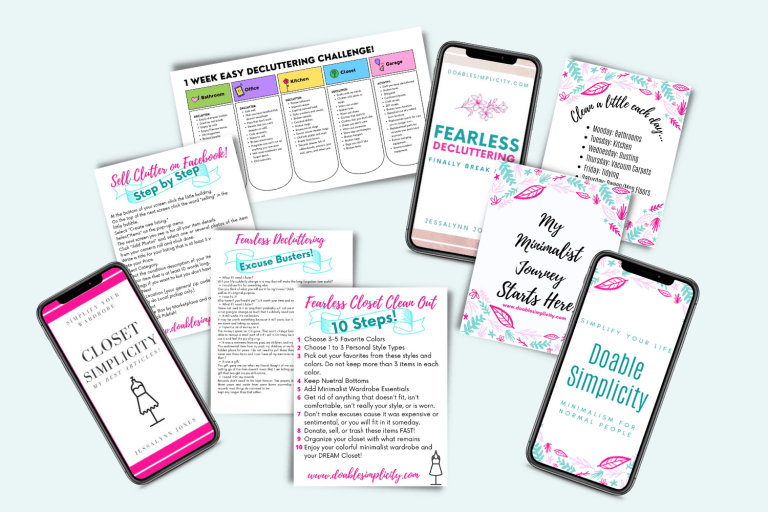8 Powerful Ways Slow Living Can Help You Manage Winter Blues
This is a guest post by Cora Gold
As the days grow shorter and the temperature drops, you may grapple with the onset of winter blues or even seasonal affective disorder (SAD). The combination of reduced daylight and colder weather can leave you feeling lethargic, anxious and emotionally drained.
However, there’s a powerful antidote to these seasonal woes: slow living.
By embracing the principles of slow living, you can transform your approach to fall and winter, finding solace and joy in the darkest months.
The Power of Slow Living
Slow living is a lifestyle philosophy that emphasizes mindfulness, intentionality and taking life at a deliberate pace. It encourages you to savor the present moment and prioritize self-care. Adopting slow-living principles can improve your mental well-being during the gloomy months.
Here are some other benefits of slow living:
- Reduced stress and anxiety
- Enhanced mindfulness and presence
- Appreciation for life’s simple pleasures
- Better work-life balance
- Deeper connections with others
- Greater gratitude and contentment
- Healthier lifestyle choices
- Heightened sense of purpose and fulfillment

How to Add Slow-Living Rituals to Your Routine
Embracing slow living can help you navigate colder months with grace and mindfulness. Here are eight ways to incorporate slow living into your life.
1. Limit Screen Time
Digital distractions can be overwhelming, especially those work-related emails demanding your attention. The average screen time globally for users aged between 16 and 64 is six hours and 37 minutes daily.
Slow living encourages you to reduce your screen time, particularly in the evenings. Replace mindless scrolling with other activities like playing board games with family and friends, engaging in creative hobbies, or even taking the time to listen and have heartful conversations with those close to you.

2. Learn to Say No
An essential aspect of slow living is recognizing your limits and learning to say no when necessary.
During the cooler months, numerous social events, holiday gatherings and commitments may overwhelm your schedule. The end of the year can also be a hectic time for work, with businesses rushing to get everything done before the holiday season.
By practicing the art of saying no thoughtfully and without guilt, you can protect your valuable time and energy, ensuring you have the space to truly savor the moments that matter most.
3. Eat Seasonal Foods
Slow down your approach to nourishment by savoring seasonal foods. One of the best wellness strategies you can adopt is to cook at home.
Instead of rushing through meals, take time to cook hearty, warming dishes from scratch. Chopping and simmering a home-cooked meal can be therapeutic. It is also a great wellness strategy.
In the colder months, vegetables like Brussels sprouts, sweet potato, kale and squash are in season. Center your meals around these winter veggies, and see what you can create.
Play some calming music or a funny podcast while you cook, and get creative with it. You can share these delicious dishes with loved ones and turn mealtime into a time of connection and mindless chatter.

4. Practice Gratitude
Start a gratitude journal and set aside a few moments each day to reflect on what you’re thankful for.
As the winter months unfold, this practice can shift your focus away from the gloomy aspects of the season and toward the positive, creating a more optimistic perspective.
Spend five minutes each morning listing five things you’re grateful for. It can be something as big as having a roof over your head or as small as the joy of clean sheets.
5. Spend Time in Nature
Don’t allow the cold temperature to keep you cooped up indoors. Slow living encourages you to bundle up and engage in outdoor activities that connect you with nature.
Take leisurely winter walks through snow-covered fields, go ice skating on frozen ponds or take your dog for a stroll at a nearby park. Find ways to get outside more.
These experiences allow you to appreciate the beauty of the season and recharge your spirits. Spending as little as two hours outside each week can have significant mental and physical health benefits.

6. Take Your Lunch Break
Amid the busy workdays, it’s easy to overlook the importance of taking a proper lunch break. More than 62% of American workers eat lunch at their desks, and many continue working through their breaks.
Instead of doing this, step away from your desk, find a quiet spot and eat your lunch mindfully.
Use your break to nourish your body as well as your mind. It’s a chance to reset, recharge and return to your tasks with increased focus and energy.
7. Cherish Your Morning Routine
Mornings can set the tone for your entire day, making them a crucial part of slow living. In the fall and winter, when it can be tempting to linger in bed a little while longer, cherish your morning self care routine. Give yourself enough time to get ready without arriving at work flustered.
Create a calming routine, whether it’s starting your day with a warm cup of tea and a few pages of reading or doing some gentle stretches.
These moments of peace can anchor you in the present and provide a sense of purpose and tranquility before you face the day’s challenges.

8. Give Back
Dedicate some of your time to volunteering.
Choose a cause that means something to you — whether that’s assisting at a local food bank or participating in a charity event.
Taking time to serve others and giving back to your community spreads kindness and allows you to forge meaningful connections with others.
Enjoy the Simple Pleasures
Winter blues can put a damper on the season, but incorporating slow-living principles into your life during the wintertime can make a world of difference.
By slowing down, practicing mindfulness and prioritizing self-care, you can manage seasonal depression and find beauty and contentment in the quieter, colder months. Slow down and enjoy a happy simple life this winter.
Meet the Writer:
Cora Gold is freelance writer who covers minimalism and green living. She is also the Editor-in-Chief of women’s lifestyle magazine, Revivalist. Follow Cora on Twitter, LinkedIn and Pinterest.








